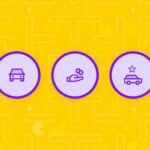
In The Matrix: Resurrections (2021) movie, Neo, the protagonist fighting against a computer-generated world called the Matrix, and his team of fighters are gathered around a set of computers trying to locate Trinity, Neo’s partner, who is still stuck in the Matrix. Neo points to the distinctive green code that characterizes the Matrix on a computer screen and says, “That’s her, on the bridge.” The camera then cuts to Trinity riding her motorcycle on a bridge, not knowing that she is part of a simulation. How was the computer able to “see” Trinity on the bridge? That’s not the concern of the movie (they need to save humanity), but it is the focus of this article.
What we see play out in The Matrix: Resurrections is called “computer vision.” This technology is what allows computers to “see” and make sense of visual information. Computer vision relies on a combination of algorithms and artificial intelligence to process information like shapes, colors, and textures to understand what is before it. The computer in The Matrix was able to spot Trinity using visual cues like her hair, her facial structure, her clothes, etc. to make a match to the person known as Trinity, much like we would use the same cues to identify a person – even if it sometimes takes us longer than a computer!
“Computer vision relies on a combination of algorithms and artificial intelligence to process information like shapes, colors, and textures to understand what is before it.”
Although the computer was able to recognize Trinity inside the Matrix in a matter of seconds, there were a few steps that took place before the computer could correctly identify her.
- Image Acquisition: Computer vision requires visual input. In the movie, we see that Neo and his friends have tapped into the many cameras and sensors in the unnamed city inside the Matrix where Trinity is living.
- Preprocessing: The visual input may need some tweaking to enhance its quality before analysis can begin. This can include resizing, noise reduction or cancellation, and more. In the movie, we see this process subtly when the camera starts to zoom in on Trinity riding her motorcycle. The first shot of her is an aerial view but later becomes more focused as the camera shot lands square on her.
- Feature extraction: Once the visual input has been “cleaned,” algorithms start extracting relevant visual attributes to help understand the content of the image or video.
- Feature representation: The visual features or attributes extracted must then be represented in a way that can be processed by machine learning algorithms. In the movie, we see that the visual input of Trinity is represented on the computer screen by a series of numbers and characters.
- Machine Learning and Training: In this step, the computer would be trained to understand the characteristics of new visual inputs based on previous inputs it had been fed. For example, a computer would know how to identify a new human if it had been trained on the characteristics, such as noses, ears, arms, etc. that make up a human.
- Recognition and Interpretation: A trained computer vision system can now recognize new, unseen visual data. In the movie, we see that the computer has flagged the representation of Trinity through a gold outline.
At this point, you may understand computer vision very well – and that is great! But you may be wondering, is this technology only available in the science fiction world of a movie? The answer is no! Computer vision has many uses and applications in our own world.
Let’s start with a very simple and ubiquitous example of computer vision in the real world. You’re probably reading this article on your computer or your phone. If you’re using your phone, you probably had to unlock it using either a passcode, a PIN, or face ID. If you used face identification, you saw computer vision in action! Your front-facing camera captured an image of your face, identified key features, then compared the image to the saved image of you that you registered when setting up face ID. Once computer vision has identified the image as a match of the authorized user (you), the phone will unlock.
Now, let’s try another example of computer vision that you may not interact with every day but that has slowly crept into the weekly routine of people. You probably shop for groceries at least once a week. Does your grocery store have self-checkout kiosks? There’s typically a camera pointed right at you above the register as you scan your groceries. Computer vision can be used to make sense of the camera feed from these self-checkout kiosks to identify and flag any suspicious behavior – such as someone pocketing an item without paying or looking around anxiously.
Here’s a third example of computer vision that, hopefully, you don’t interact with as much. Computer vision can be used in traffic cameras to detect violations like speeding and running red lights. Computer vision can then extract the license plates of the offending cars so law enforcement can send tickets to the right people. If you ever got a speeding ticket even though there was no police officer to stop you when the incident occurred, that was computer vision at work.
So, The Matrix: Resurrections’ exploration of computer vision – even if it does not use the term – is rooted in the reality of our lives. We can use computer vision to help us unlock our phones, track goods in grocery stores, or help find loved ones.





 New Episode
New Episode





 Latest IoT News
Latest IoT News







